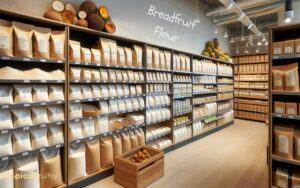What Is Breadfruit Used for? A Comprehensive Guide!
Breadfruit, a staple crop in many tropical regions, is prized for its versatility and nutritional benefits. Originating from the Pacific Islands, it has become a key ingredient in a myriad of traditional dishes.
The fruit’s starchy content allows it to be used as a substitute for potatoes or bread, hence its name.
In modern culinary practices, breadfruit is being transformed into gluten-free flour and vegan meat substitutes, reflecting its adaptability to contemporary dietary trends.
Rich in fiber, vitamins, and minerals, it contributes significantly to balanced diets. Agriculturally, breadfruit trees are valued for their high yield and low maintenance, making them a sustainable food source that supports food security efforts.
Beyond the kitchen, breadfruit also finds usage in non-food sectors, including the production of textiles and animal feed, demonstrating its multifaceted applications.
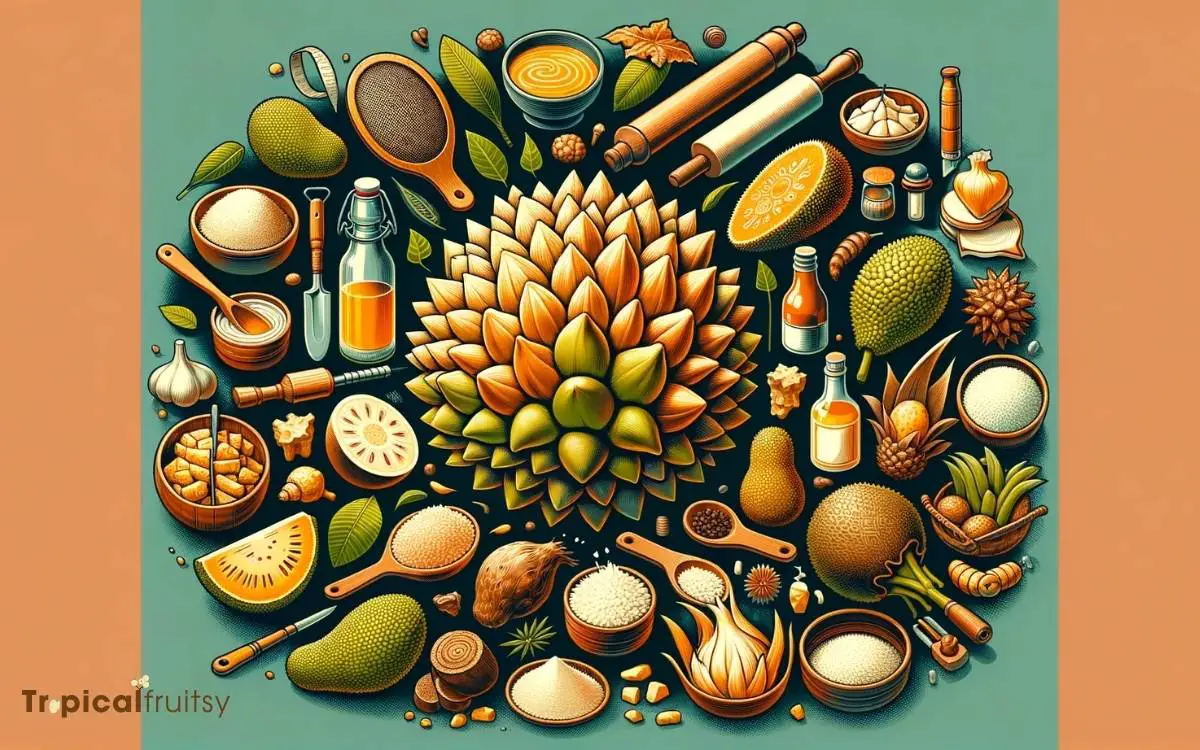
Key Takeaway
Versatile Uses of Breadfruit
| Usage | Description |
|---|---|
| Culinary Purposes | Cooked as a vegetable in various savory dishes |
| Staple Food | Consumed as a primary source of carbohydrates |
| Meat Substitute | Used to replace meat in vegetarian dishes |
| Roasted or Fried | Prepared by roasting, frying, or grilling |
| Mashed or Pureed | Used in mashed form, similar to mashed potatoes |
| Breadfruit Chips | Sliced and fried to make chips or crisps |
| Desserts | Used in sweet desserts and pastries |
| Flour | Ground into flour for baking |
| Traditional and Cultural Significance | Integral part of traditional diets in tropical regions |
| Ecological Importance | Supports agroforestry systems and food security |
Traditional Culinary Uses
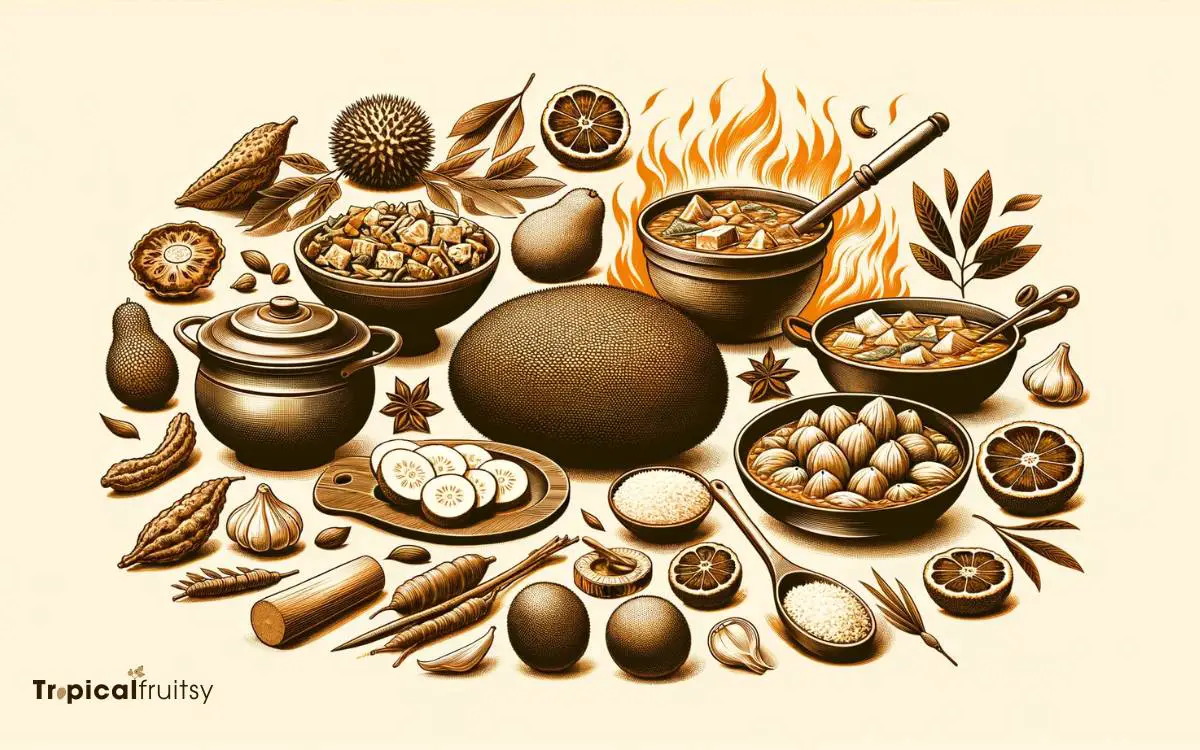
Historically, breadfruit has served as a staple food in various tropical regions, where it is commonly prepared as a versatile ingredient in a myriad of traditional dishes.
Its culinary uses are deeply interwoven with the cultural fabric of societies in the Pacific Islands, Caribbean, and parts of Asia.
Breadfruit is esteemed for its high starch content and is utilized in a manner akin to potatoes in Western cuisine. When ripe, its texture softens, and it can be eaten raw or incorporated into sweet preparations.
Unripe breadfruit is typically cooked, transforming its spongy flesh into a firm and savory component.
It is often boiled, roasted, fried, or pounded into a dough-like consistency, providing a nutritious foundation for a wide range of gastronomic expressions.
Modern Cooking Innovations
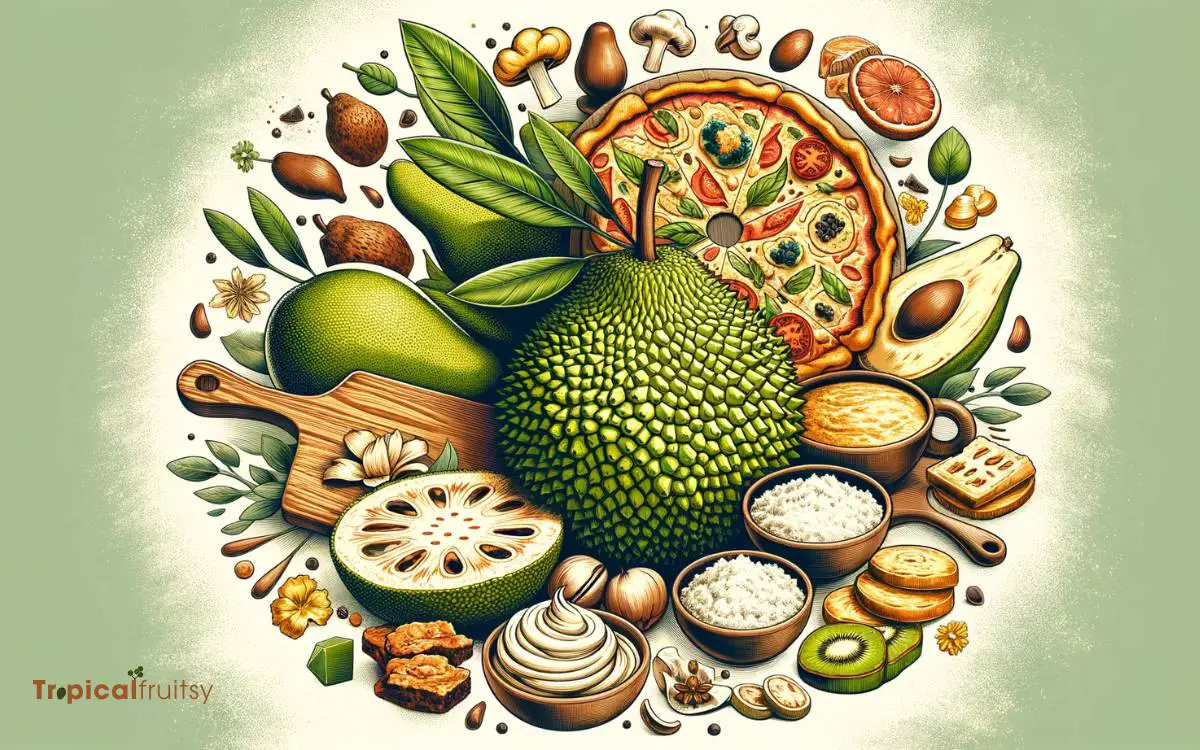
In contemporary gastronomy, chefs frequently experiment with breadfruit to create innovative dishes that reimagine its traditional role in cuisine.
This versatile fruit is being transformed through modern culinary techniques, such as sous-vide cooking and molecular gastronomy, to explore its full potential beyond the conventional uses.
Breadfruit’s starchy texture and neutral flavor profile make it an excellent canvas for flavor infusions and complex plating designs.
Gastronomists analyze its unique composition, seeking to enhance its nutritional benefits while elevating the sensory experience.
Culturally-informed culinary practices have led to the fusion of breadfruit with diverse ingredients, reflecting a global palate.
This has resulted in dishes that are not only inventive and aesthetically appealing but also rooted in a cross-cultural narrative that enriches the dining experience.
Nutritional and Health Benefits
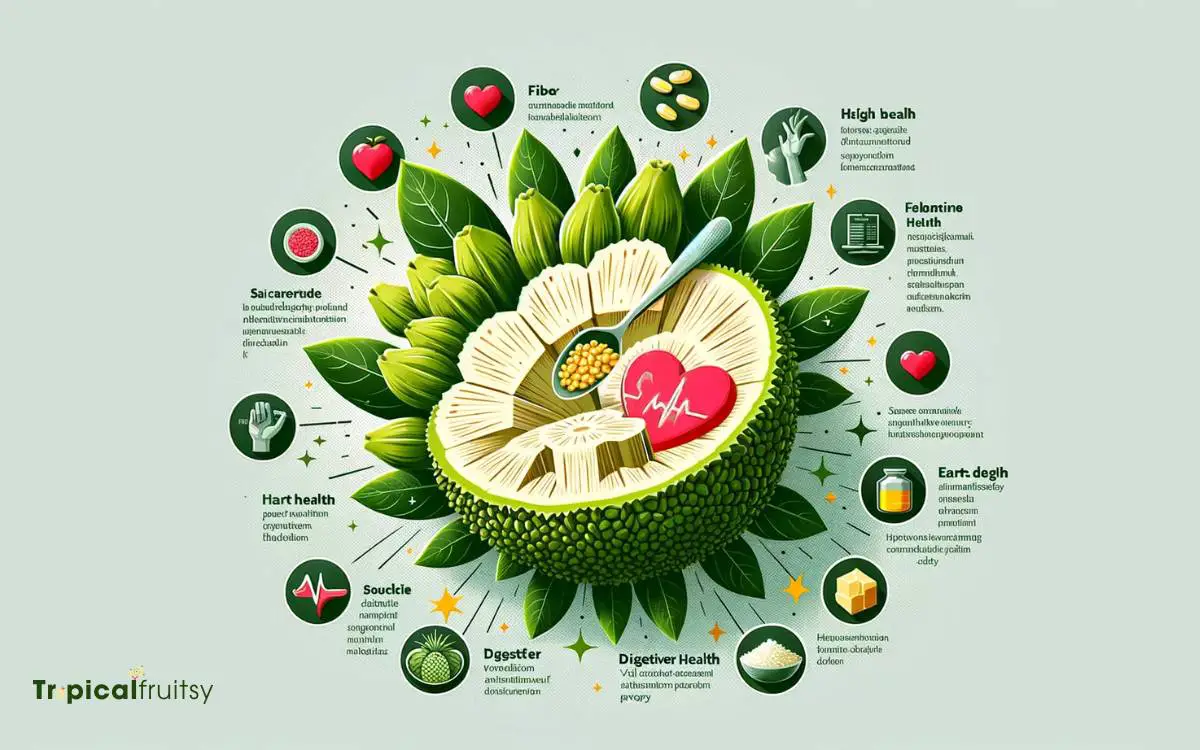
Why should one consider incorporating breadfruit into their diet?
Breadfruit stands out as a highly nutritious staple, offering a wealth of health benefits. It is rich in complex carbohydrates, fiber, and essential vitamins and minerals such as vitamin C, potassium, and magnesium.
Analytically, its low glycemic index makes it suitable for those managing diabetes, while its fiber content promotes digestive health and can aid in weight management.
Culturally, breadfruit has been a cornerstone in the diets of Pacific Islanders, who have historically relied on its nutritional bounty for sustenance. Breadfruit also contains antioxidants that combat oxidative stress, contributing to overall wellbeing.
These nutritional advantages underscore the importance of breadfruit not only in traditional diets but also in contemporary health-conscious lifestyles.
Environmental and Agricultural Impact

As breadfruit trees require relatively little maintenance and are highly efficient in converting sunlight into edible food, their cultivation presents a sustainable agricultural practice with a low environmental footprint.
This perennial species not only contributes to food security but also to the mitigation of climate change through carbon sequestration.
The tree’s broad leaves and dense canopy provide a microclimate that can reduce the need for irrigation, a significant benefit in regions prone to water scarcity.
Moreover, breadfruit agroforestry integrates well with other crops, enhancing biodiversity and promoting soil health.
This multipurpose tree also offers a culturally-informed solution to deforestation in tropical areas, where traditional slash-and-burn agriculture degrades land.
By fostering breadfruit as a staple crop, communities invest in a resilient agricultural system that respects ecological balances and sustains future generations.
:Can Breadfruit Be Included in a Kidney-Friendly Diet?
Breadfruit can be included in a kidney-friendly diet. It is a low-potassium and high-fiber fruit that is suitable for people with kidney disease. Its nutrients can provide health benefits without causing harm to the kidneys. Including breadfruit in moderation can be a delicious addition to a kidney-friendly meal plan.
Non-Food Applications

Breadfruit tree’s versatility extends beyond its culinary uses, encompassing various non-food applications that contribute to its value in sustainable living practices.
The plant’s fibrous inner bark is utilized in textile production, often in the creation of traditional clothing and artifacts, showcasing its cultural significance in many Pacific societies.
Scientific analysis reveals the wood’s resistance to termites, making it a sought-after material in eco-friendly construction, particularly in tropical regions where such pests are prevalent.
Moreover, breadfruit latex serves as a waterproofing agent and adhesive, historically used for caulking boats—a testament to its longstanding utility in indigenous maritime technology.
These applications not only highlight the tree’s multifaceted nature but also its integration into ecological and cultural sustainability.
Conclusion
Breadfruit serves not only as a culinary staple with deep traditional roots but also as a versatile ingredient in modern gastronomy.
Its significant nutritional value contributes to health and well-being, while its cultivation supports environmental sustainability.
Furthermore, breadfruit’s utility extends beyond the kitchen, finding roles in various non-food applications.
Thus, this multifaceted fruit stands as a testament to the ingenious utilization of natural resources, reminiscent of the cornucopia from the annals of mythology, offering bountiful benefits to humanity.





